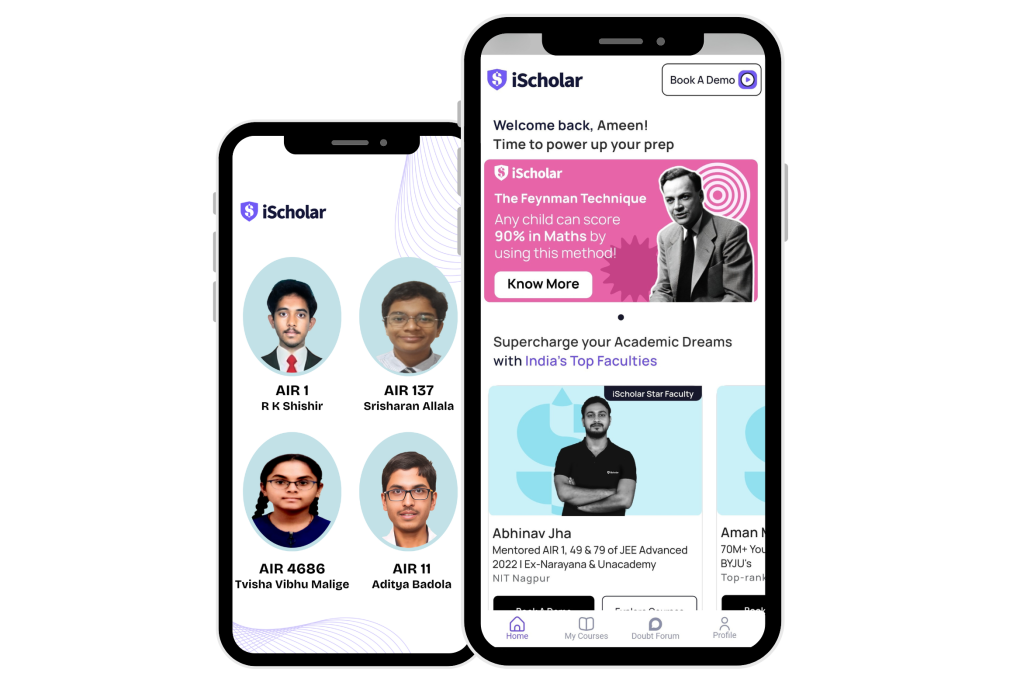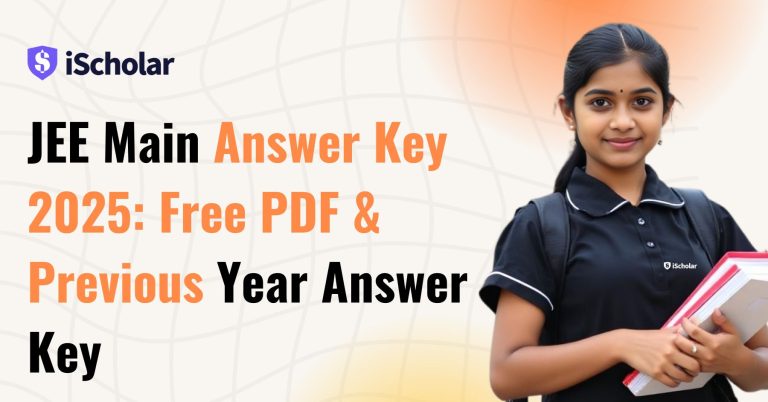JEE Main 2026 Exam Pattern: One of India’s toughest engineering entrance exams is the Joint Entrance Examination (JEE) Main and is administered by the National Testing Agency (NTA). Every year the governing body will conduct the examination in two sessions, one in January and one in April. Every year, more than 23 lakhs students appear for JEE Main exam with the dream of entering prestigious institutions like IIT, NIT, GFTI etc.
For efficient preparation, it is essential to comprehend the JEE Main exam format. Candidates can use it to plan and organize their time and improve their scores. This article will cover all you need to know about the most recent JEE exam pattern, including marking systems, exam format, total questions, and an explanation of the JEE Main, JEE Advanced, and B.Arch paper patterns.
Overview of JEE Main Exam Structure
Three distinct papers are part of the IIT JEE test pattern:
- JEE Main Paper 1: For B.E./B.Tech
- JEE Main Paper 2A: For B.Arch
- JEE Main Paper 2B: For B.Planning
Each JEE paper has a different syllabus, exam pattern, and marking scheme. Candidates can choose to appear for one or more papers based on the course they wish to pursue (e.g., B.E./B.Tech, B.Arch, or B.Planning).
JEE Main Paper 1: B.E./B.Tech Exam Pattern
Mode of Exam: Computer-based test (CBT) only
Subjects and Question Distribution:
|
Subject |
Total Questions |
Questions to Attempt |
Marks |
|
Physics |
30 |
25 |
100 |
|
Chemistry |
30 |
25 |
100 |
|
Mathematics |
30 |
25 |
100 |
|
Total |
90 |
75 |
300 |
Each subject has two sections
- Section A: 20 Multiple Choice Questions (MCQs)
- Section B: 10 Numerical Value Questions (only 5 to be attempted)
Marking Scheme
- +4 marks for each correct answer
- -1 mark for each incorrect MCQ
It’s essential to remember this negative scoring system, particularly when answering MCQ questions.
Changes in JEE Main New Pattern
NTA changed the JEE Mains pattern in several ways in recent years, mainly to increase flexibility and account for changes brought on by the pandemic:
- Numerical value questions were introduced.
- Internal choice is provided in Section B.
These new JEE Main patterns guarantee a more balanced conceptual clarity and application assessment.
JEE Main B.Arch Exam Pattern (Paper 2A)
JEE Main Paper 2A is crucial for those aspiring to study architecture. The B.Arch paper pattern is as follows:
Mode of Exam:
- Mathematics and Aptitude: Computer-based
- Drawing Test: Pen-and-paper mode
|
Subject |
Questions |
Marks |
|
Mathematics |
25 |
100 |
|
Aptitude Test |
50 |
200 |
|
Drawing Test |
2 |
100 |
|
Total |
77 |
400 |
B.Arch Marking Scheme
- +4 for correct MCQ/numerical
- -1 for wrong MCQ
- Drawing marked based on evaluation by experts
Many look for the B.Arch exam example paper to grasp the drawing portion better. Practicing the format of previous years’ B.Arch question papers is strongly advised.
JEE Main Paper 2B: B.Planning Exam Pattern
Mode of Exam: Entirely computer-based
|
Subject |
Questions |
Marks |
|
Mathematics |
25 |
100 |
|
Aptitude |
50 |
200 |
|
Planning-Based Qs |
25 |
100 |
|
Total |
100 |
400 |
Number of Papers in JEE Main
One common query is: “JEE Main ke kitne paper hote hain?”
There are three papers:
- Paper 1: B.E./B.Tech
- Paper 2A: B.Arch
- Paper 2B: B.Planning
Depending on the courses they choose, candidates may try one or all of them.
Time Duration of JEE Exam
- JEE Main Duration: 3 hours for each paper
- JEE Advanced Duration: 6 hours (3 hours per paper)
Understanding the length of the IIT JEE exam aids students in allocating their time according to sections.
Importance of Understanding the JEE Marking Scheme and Pattern
A thorough comprehension of the JEE Main marking scheme is essential for both avoiding penalties and creating a clever response plan. Blind guessing should be avoided in all parts because both multiple-choice (MCQ) and numerical value questions get negative marking for incorrect responses. Understanding this enables you to successfully manage your risks and approach questions with greater caution. Your accuracy, time management, and final exam score are all directly impacted by your familiarity with the paper format, question types, and marking guidelines.
Mode of JEE Examination: CBT and Offline Format Clarified
Another thing that sometimes confuses students is the format of the JEE exam. While the B.Arch (Paper 2A) drawing test is still pen-and-paper based, JEE Main Paper 1, Paper 2B, and the Math and Aptitude portion of Paper 2A are all administered in Computer-Based Test (CBT) style as of 2025. This hybrid format assesses the flexibility of a candidate.
Mock tests that mimic the online exam setting should help students study, particularly for questions with numerical values that call for typing responses. Online test platforms like the iScholar mock tests or the NTA Abhyas App will help you become more accustomed to the interface and time limits.
Frequently Asked Questions (FAQs)
- In what ways does timing help me do better on exams?
It helps you create a plan to efficiently divide your time among several sections or questions and educates your brain to remain focused under time constraints.
- What is the JEE Main Paper 1 total score?
A total of 300 points are awarded for Paper 1 (100 for each of Physics, Chemistry, and Mathematics).
- How many JEE Main attempts are permitted?
- Every year, there are two attempts (January and April).
- Maximum three years in a row following Class 12
- Do JEE questions ask subjective questions?
No, the JEE is an objective test. Although they are not subjective, there are questions of a numerical type.
- How can I best practice for the JEE Main exam at home?
Set a three-hour timer, find a quiet place to sit, complete a full-length practice exam, and refrain from stopping or reviewing your answers.
Tips to Tackle New JEE Pattern
- Mock Tests in New Pattern: Practice with JEE new pattern sample examinations to become accustomed to optional and numerical questions.
- Use Chapter-Wise PYQs: These are excellent for time-saving and focused preparation.
- Study Blueprint: Despite the lack of an official IIT JEE test blueprint, a framework is provided by the study of repeated questions.
- Always use a timer during practice sessions to build endurance for the real exam.
Understanding the format of the JEE Main exam is the first step in creating a smart study strategy. Suppose you are preparing for the B.Tech, B.Arch, or B. Planning examinations, you will have a significant edge if you comprehend the structure, curriculum coverage, marking systems, and framework of the JEE test.
By finishing last year’s papers, following a systematic timetable, and staying up to date with the latest changes to the JEE pattern, you may be prepared to manage any unexpected questions on the test. You can improve your accuracy, confidence, and chances of receiving a higher score by completing chapter-by-chapter PYQs, practicing on practice exams, and assessing your preparedness regularly. Whether your goal is securing a seat in an NIT or cracking into the IITs, consistency, clarity, and commitment will lead you to success.
Stay tuned with iScholar for more expert tips, JEE resources, and study strategies to help you succeed in your learning journey!





